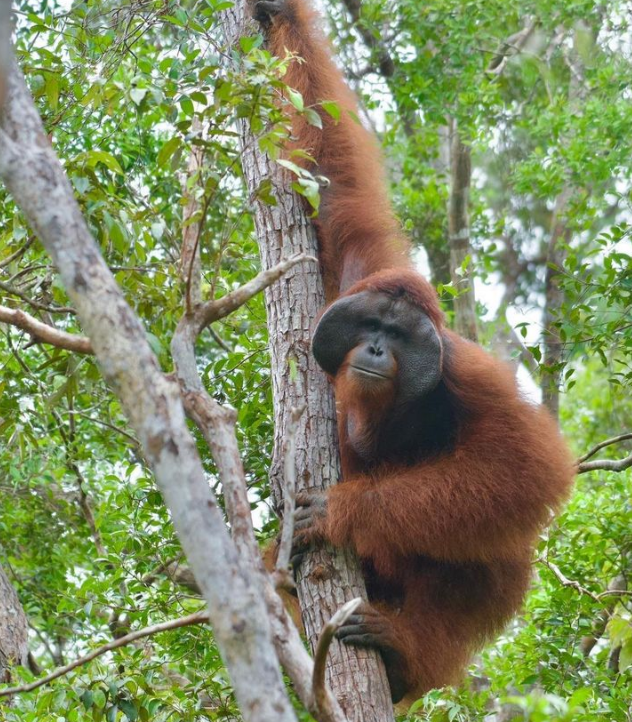Rapid urbanization and the burgeoning human population have a direct impact on the availability of land for wildlife to inhabit independently. Due to humans’ predominantly diurnal habits, wildlife often adapts to nocturnal activity patterns, typically near the peripheries of protected areas, where they are frequently observed at night while searching for prey. Gaynor et al. have noted a global trend towards increasing nocturnality among wildlife, from herbivores to carnivores.
Human activities tend to displace wildlife, altering their adaptive behaviors and activity patterns. Human presence has influenced the distribution of various wildlife species, from urban-adaptive primates to shy small carnivores. One mechanism that can explain coexistence is the extent to which a species tolerates human disturbance. Animal dependency and their fear of humans influence habitat utilization by these animals.
Humans as Predators
Animals often perceive humans as predators, so even non-predatory human activities can affect their behavior. Human disturbance can impact wildlife behavior, which, in turn, can have consequences for wildlife populations. For instance, wildlife may become more vigilant in areas with human disturbance, leading to reduced forage intake and decreased reproductive success. The influence of human presence on the ecological aspects of species is evident in their feeding and movement patterns. The impact of disturbance on species’ ecological aspects can have lasting effects, such as changes in distribution patterns, feeding habits, and population status.
Various sources of potential disturbances as perceived by wildlife include habitat fragmentation, destruction, and loss, the introduction of invasive species, expansion of urban infrastructure (referred to as linear infrastructure developments), climate change, and global land-use and land-cover changes.
Alterations in the biotic and abiotic factors associated with a habitat, such as food, cover, water, soil, and other local parameters, can influence the biota of that habitat. The growing human-induced modifications in the environment and development pressures have led to a significant threat to biodiversity due to limited available resources.
Wildlife Impacted by Increased Stress
Species endemic or native to a region face direct threats from changes in local parameters and increasing anthropogenic pressures. The stress levels induced by human presence can be assessed through changes in behavior, as previously documented in tigers in India. Species like Rhesus Macaques, which coexist with humans in urban environments, exhibit tolerance to human-induced disturbances and often depend on humans for food sources. Additionally, the reduction in natural forested habitat availability has pushed macaques to seek food sources outside their natural habitats, contributing to increased human-wildlife conflict and negative perceptions of wildlife.
But wildlife can also adapt to human disturbances
In cases where animals exhibit higher tolerance to human disturbances and come into direct contact with humans, they are often considered pests. This is evident in the case of Nilgai, a major cause of human-wildlife conflict in the Uttar Pradesh region of India. Animals with increased resource dependency display activities like crop-raiding and livestock depredation in and around protected area villages.
Species that display little to no tolerance to human presence are often forced into suboptimal habitats, resulting in altered behavior, increased aggression, and health impacts due to the limited availability of essential nutrients in their diets, a consequence of habitat-selective pressures. These short-term and long-term changes have a significant impact on the spatial and temporal patterns of biodiversity in an area.

Conclusion
The effects of disturbances at both the species and ecosystem levels are significant factors contributing to the global decline in wild animal populations. Addressing these issues requires the attention of contemporary researchers and the scientific community.
Understanding these specific factors that cause direct and long-term impacts from changes in land-use patterns is essential for assessing the health of any habitat and its carrying capacity for various species. Balancing the predator-prey relationship and hierarchical associations within ecological niches, influenced by human-induced pressures, must be studied through various parameters in any area. To mitigate and address the ongoing problem of species loss, sustainable resource use by people and the reduction of threats or disturbances in any area are necessary.
Help us Help Them! Think Wildlife Foundation is a non profit organization with various conservation initiatives. Our most prominent campaign is our Caring for Pari intiative. Pari is a rehabilitated elephant at the Wildlife SoS Hospital. 25% of the profits from our store are donated to the elephant hospital for Pari. Other than buying our wonderful merchandise, you could donate directly to our Caring For Pari fundraiser.
Written by: Shreya Pandey
